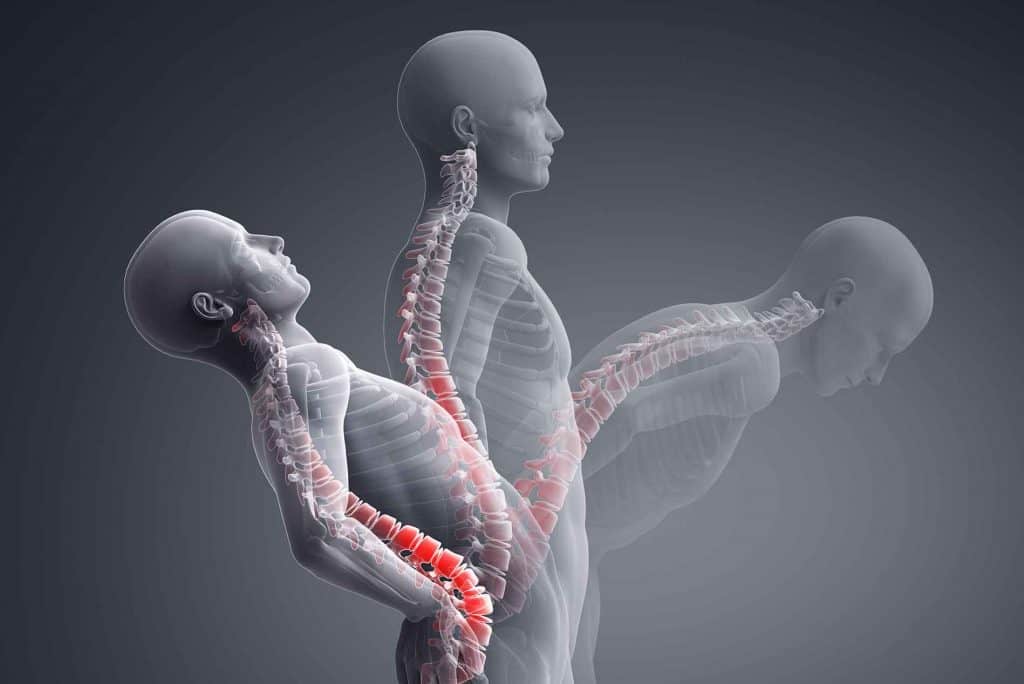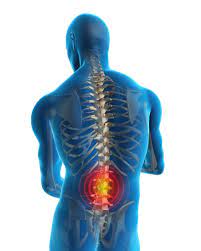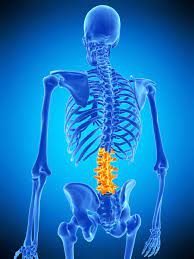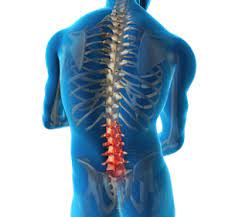

I used to think that neck pain was just a temporary discomfort from sitting too long or hunching over my phone.
Like many, I assumed the occasional soreness would go away after a good night’s sleep.
Little did I realize that my poor neck posture was slowly causing damage far beyond my neck, creeping down to my lumbar spine.
Yes, the neck and lower back may seem miles apart, but they are intricately connected through the spinal column and muscle groups.
The poor posture I was practicing at my desk, in front of the TV, or while texting was setting the stage for serious lumbar issues.
In this article, I shall explain how poor neck posture can lead to damage in your lumbar region and why it is crucial to address this problem before it spirals into chronic pain or even conditions like lumbar spondylosis.
Article Index
- Understanding Poor Neck Posture and Its Common Causes
- The Connection Between Neck Posture and Lumbar Health
- How Poor Neck Posture Leads to Lumbar Strain
- Daily Lifestyle Habits Contributing to Lumbar Damage
- Scientific Evidence Linking Neck and Lumbar Pain
- Conclusion: How to Address Poor Neck Posture and Prevent Lumbar Damage
Understanding Poor Neck Posture and Its Common Causes
Poor neck posture, often referred to as “tech neck” or “forward head posture,” happens when the head is positioned too far forward relative to the shoulders.
Instead of maintaining a natural alignment with the spine, the head juts forward, placing undue stress on the muscles of the neck and upper back.
This poor neck posture is usually a result of modern-day habits—spending hours slouched over computer screens, staring down at smartphones, or sitting in poorly designed chairs.
I have been guilty of all of the above. My days often involved long stretches at the desk, with breaks only to check my phone, further straining my neck.
Over time, this led to chronic discomfort in my neck, but what I didn’t expect was the growing pain in my lower back as well.
The Connection Between Neck Posture and Lumbar Health
The neck and lumbar areas may seem distant from each other, but they are both key parts of the spine.
Your spine works as a unit, and if one part is misaligned, it puts pressure on other areas to compensate.
Poor neck posture alters the natural curve of the spine, which can travel down to affect the lumbar spine, increasing the risk of lower back pain and hip pain.
When your head moves forward out of alignment, it throws off the balance of the spine, causing the muscles and joints in your lower back to work harder to stabilize your body.
Over time, this leads to strain and degeneration in the lumbar region, ultimately contributing to conditions like lumbar spondylosis, a degenerative condition affecting the lower spine.
How Poor Neck Posture Leads to Lumbar Strain
As your head moves forward, it acts like a lever, placing increasing pressure on the cervical (neck) spine.
This stress radiates down through the thoracic spine and into the lumbar region. Think of your spine like a long chain.
If the top link (your neck) is out of place, the lower links (your lower back) must work harder to keep the chain stable.
In my case, after months of ignoring the signs of poor neck posture, I started to experience lower back pain that felt oddly connected to my neck discomfort.
I was unknowingly placing unnecessary strain on my lower back to compensate for my poor posture, which caused stiffness and pain after even mild physical activity. Eventually, I realized this was not just a simple neck problem—my entire spine was affected.
The lumbar spine bears much of the body’s weight and provides stability for movement.
When your neck is out of alignment, your lumbar spine has to work overtime, leading to strain, misalignment, and even long-term issues like damage to the spinal discs.
This is why conditions like lumbar spondylosis, which causes wear and tear on the lower spine, can be linked to long-term poor neck posture.
Daily Lifestyle Habits Contributing to Lumbar Damage
Everyday habits that seem harmless are often the main culprits behind poor posture.
From my own experience, I can tell you that the following daily habits contributed to both my neck and lower back pain:
- Long Hours at the Desk: Sitting for extended periods without paying attention to posture caused my head to tilt forward, which ultimately strained my lumbar region.
- Poor Sleep Posture: Sleeping on my stomach or using an unsupportive pillow put additional pressure on my neck and back.
- Phone Addiction: Constantly looking down at my phone didn’t just give me neck pain—it radiated down to my lower back.
- Poor Sitting Habits: Slouching in chairs or sitting in awkward positions for too long put excessive pressure on my spine, making it harder for my lumbar to support the body properly.
One day, after noticing increasing lower back pain, I decided to add lower lumbar stretches to my daily routine.
It was a temporary relief, but the real issue was my poor neck posture.
Until I addressed that, no amount of stretching or back exercises could provide lasting relief.
Scientific Evidence Linking Neck and Lumbar Pain
Several studies have shown the connection between poor neck posture and lumbar pain.
A study published in the Journal of Physical Therapy Science found that forward head posture significantly increases stress on the cervical and lumbar regions.
The researchers highlighted that postural misalignment in the neck places excess strain on the lower back, leading to pain and potential damage to the lumbar spine.
Another study in the Spine Journal explored how poor posture neck pain can exacerbate issues in the lumbar spine.
It concluded that chronic neck misalignment can cause compensatory movements in the lower spine, leading to lumbar strain, disc degeneration, and lower back pain. I could personally relate to this, as I started noticing lower back discomfort as my neck pain worsened.
Additionally, lumbar spondylosis, a degenerative condition of the lumbar spine, is often linked to years of poor posture.
As the body compensates for misaligned neck posture, the lumbar spine experiences increased wear and tear, accelerating the onset of this painful condition.
How to Address Poor Neck Posture and Prevent Lumbar Damage
In summary, poor neck posture does not just affect your neck—it has far-reaching consequences that extend down to your lumbar spine.
The misalignment of the cervical spine causes a ripple effect that forces the lumbar spine to compensate, leading to strain, degeneration, and chronic pain over time.
Whether it is lower back pain and hip pain or the onset of more serious conditions like lumbar spondylosis, the damage to your lumbar region can be traced back to poor neck posture.
From my personal experience, I have learned that ignoring neck pain can lead to more severe problems in the lower back.
It was not until I addressed my poor posture that I began to see improvements in both areas.
While lower lumbar stretches and exercises can offer temporary relief, the real key to preventing lumbar damage lies in fixing crane neck posture.
For anyone experiencing similar issues, I would recommend seeking proper poor posture neck pain treatment, which addresses the root of the problem rather than just the symptoms.
By taking care of your spine as a whole, you can prevent the long-term damage that poor posture can cause.
References:


